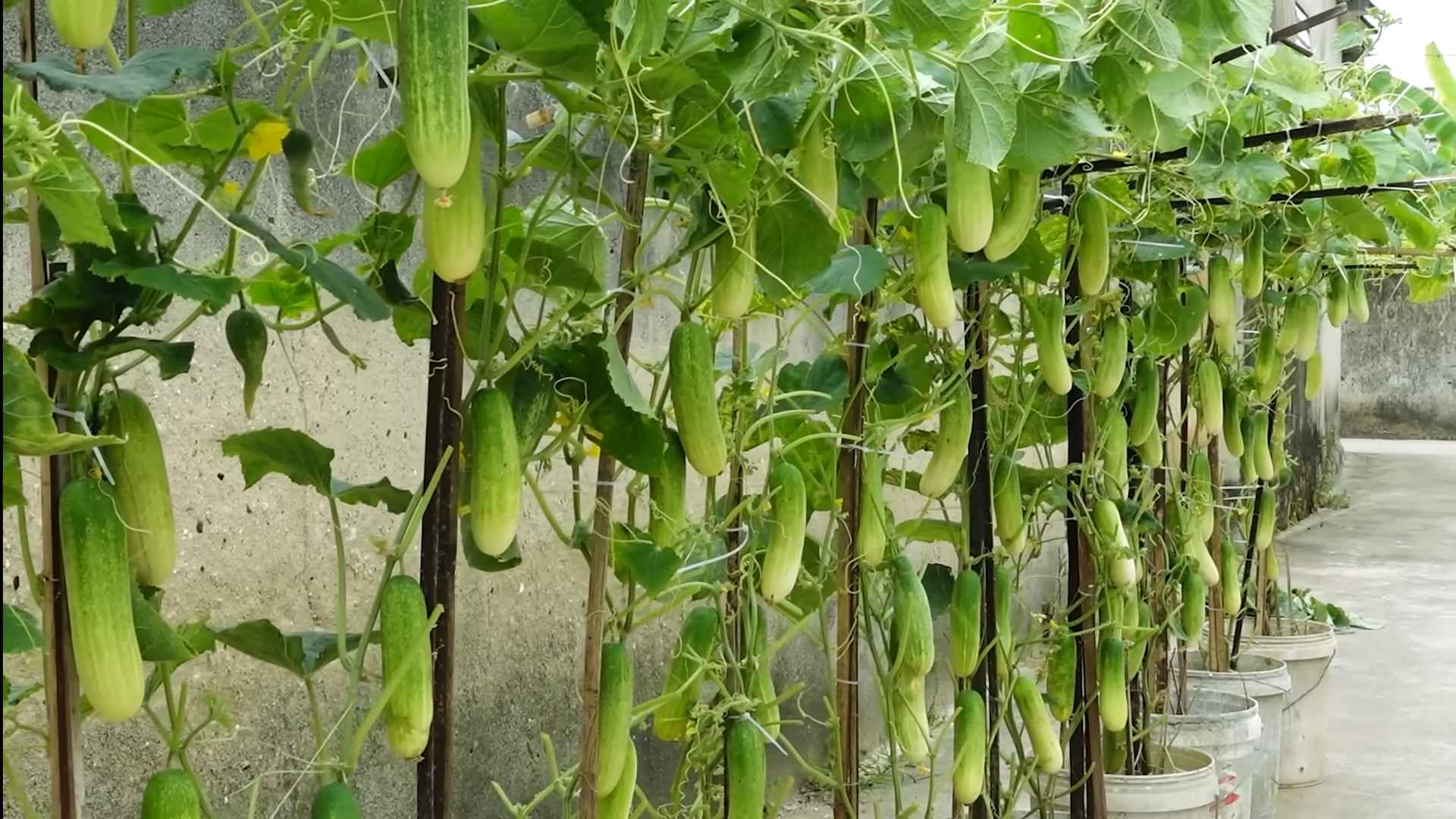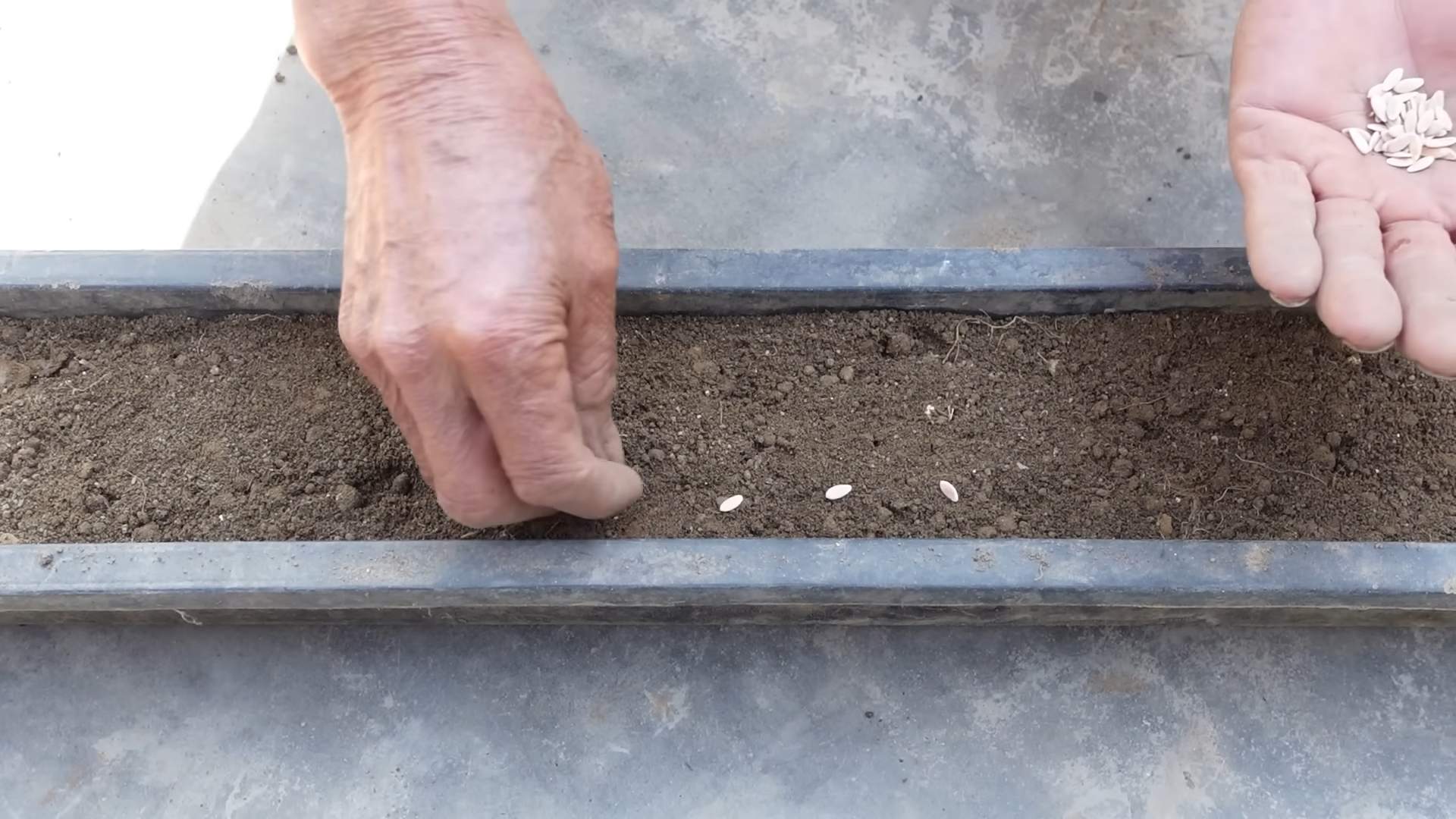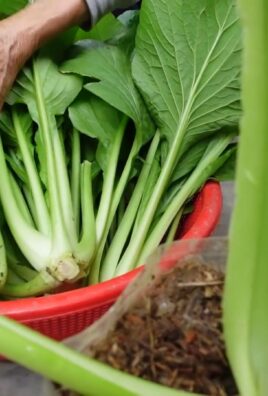Grow cucumbers at home, even if you think you don’t have the space! Imagine biting into a crisp, refreshing cucumber you nurtured from a tiny seed, right in your own backyard (or even balcony!). Forget those bland, waxed cucumbers from the grocery store. We’re talking about vibrant, flavorful cucumbers bursting with sunshine and homegrown goodness.
For centuries, cucumbers have been a staple in gardens around the world, dating back to ancient civilizations. From Cleopatra’s beauty rituals to traditional pickling methods passed down through generations, the cucumber boasts a rich history. But you don’t need to be an expert gardener to enjoy the fruits (or rather, vegetables!) of your labor.
Many people shy away from growing their own cucumbers, thinking it’s too complicated or requires a sprawling garden. That’s where these DIY tricks and hacks come in! I’m here to show you that grow cucumbers at home is easier than you think, even if you’re a complete beginner. We’ll explore simple, space-saving techniques, from vertical gardening to container planting, ensuring you can enjoy a bountiful harvest no matter your living situation. Get ready to ditch the store-bought cucumbers and embrace the satisfaction of growing your own delicious, healthy snacks!

Growing Cucumbers Like a Pro: My DIY Guide to a Bountiful Harvest
Okay, cucumber lovers, gather ’round! I’m going to share my tried-and-true method for growing cucumbers at home. Forget those bland, watery grocery store cucumbers – we’re talking crisp, flavorful, homegrown goodness. This guide will walk you through everything from seed to salad, ensuring you have a cucumber harvest you can be proud of.
Choosing Your Cucumber Variety
Before we get our hands dirty, let’s talk cucumbers. There are tons of varieties out there, and the best one for you depends on your space, climate, and what you plan to do with your cucumbers.
* Slicing Cucumbers: These are your classic salad cucumbers. They’re usually long, smooth-skinned, and have a mild flavor. Think ‘Marketmore’ or ‘Straight Eight’.
* Pickling Cucumbers: Shorter, stubbier, and often bumpy-skinned, these are perfect for pickling. ‘National Pickling’ and ‘Boston Pickling’ are popular choices.
* Bush Cucumbers: If you’re short on space, bush varieties are your best friend. They grow in a compact form, making them ideal for containers. ‘Spacemaster’ and ‘Bush Champion’ are great options.
* Gherkin Cucumbers: These are tiny cucumbers, perfect for making cornichons or adding a crunchy bite to salads.
I personally love growing ‘Lemon’ cucumbers because they are round, yellow, and have a slightly sweet flavor. They are also a conversation starter!
Getting Started: Seeds vs. Seedlings
You have two options: starting from seed or buying seedlings. Both have their pros and cons.
* Starting from Seed: This is the more economical option, and it gives you more control over the entire process. However, it requires a bit more patience and attention.
* Buying Seedlings: This is a quicker and easier option, especially if you’re a beginner. Just make sure to choose healthy-looking seedlings with strong stems and vibrant green leaves.
I usually start my cucumbers from seed indoors about 3-4 weeks before the last expected frost. This gives them a head start and protects them from any late-season cold snaps.
Step-by-Step Guide: From Seed to Sprout
Here’s how I start my cucumber seeds indoors:
1. Gather Your Supplies: You’ll need seed starting trays or small pots, seed starting mix (not regular potting soil!), cucumber seeds, and a spray bottle.
2. Prepare the Seed Starting Mix: Moisten the seed starting mix with water until it’s damp but not soggy.
3. Sow the Seeds: Plant 2-3 seeds per cell or pot, about ½ inch deep.
4. Cover and Water: Gently cover the seeds with more seed starting mix and water lightly with a spray bottle.
5. Provide Warmth and Light: Place the trays or pots in a warm location (around 70-80°F) and provide plenty of light. A heat mat can help speed up germination. If you don’t have a sunny window, use a grow light.
6. Keep the Soil Moist: Check the soil daily and water as needed to keep it consistently moist.
7. Thin the Seedlings: Once the seedlings emerge and have a few true leaves (the second set of leaves), thin them to one seedling per cell or pot. Choose the strongest, healthiest-looking seedling.
Preparing the Garden Bed or Container
Cucumbers are heavy feeders, meaning they need a lot of nutrients to thrive. They also need plenty of sunshine and well-drained soil.
1. Choose a Sunny Location: Cucumbers need at least 6-8 hours of sunlight per day.
2. Prepare the Soil: Amend the soil with plenty of compost or well-rotted manure. This will improve drainage, add nutrients, and help retain moisture.
3. Consider a Trellis: Most cucumber varieties benefit from being grown on a trellis. This helps improve air circulation, prevents diseases, and makes harvesting easier. You can use a simple A-frame trellis, a wire fence, or even a tomato cage. Bush varieties can be grown without a trellis, but they may still benefit from some support.
4. Container Gardening: If you’re growing cucumbers in containers, choose a pot that is at least 12 inches in diameter and 12 inches deep. Use a high-quality potting mix and make sure the pot has drainage holes.
Transplanting Your Cucumber Seedlings
Once the danger of frost has passed and the soil has warmed up, it’s time to transplant your cucumber seedlings into the garden or containers.
1. Harden Off the Seedlings: Before transplanting, you need to harden off the seedlings. This means gradually exposing them to outdoor conditions over a period of 7-10 days. Start by placing them in a sheltered location for a few hours each day, gradually increasing the amount of time they spend outdoors.
2. Transplant Carefully: Dig a hole that is slightly larger than the root ball of the seedling. Gently remove the seedling from its pot and place it in the hole. Backfill with soil and water thoroughly.
3. Space the Plants Properly: Space the plants according to the variety you’re growing. Slicing and pickling cucumbers typically need 12-18 inches of space between plants, while bush varieties can be planted closer together.
4. Mulch Around the Plants: Apply a layer of mulch around the plants to help retain moisture, suppress weeds, and regulate soil temperature. Straw, wood chips, or shredded leaves are all good options.
Caring for Your Cucumber Plants
Once your cucumber plants are in the ground, it’s important to provide them with proper care to ensure a bountiful harvest.
* Watering: Cucumbers need consistent moisture, especially during hot, dry weather. Water deeply and regularly, aiming for about 1 inch of water per week. Avoid overhead watering, as this can lead to fungal diseases. Drip irrigation or soaker hoses are ideal.
* Fertilizing: Feed your cucumber plants every 2-3 weeks with a balanced fertilizer. You can also side-dress them with compost or well-rotted manure.
* Weeding: Keep the area around your cucumber plants free of weeds. Weeds compete with the plants for nutrients and water.
* Pest Control: Keep an eye out for common cucumber pests, such as aphids, cucumber beetles, and squash bugs. Hand-picking pests, using insecticidal soap, or applying neem oil can help control infestations.
* Disease Prevention: Cucumbers are susceptible to several fungal diseases, such as powdery mildew and downy mildew. To prevent these diseases, provide good air circulation, avoid overhead watering, and apply a fungicide if necessary.
Training Your Cucumbers on a Trellis
If you’re growing your cucumbers on a trellis, you’ll need to train them to climb.
1. Guide the Vines: As the cucumber vines grow, gently guide them towards the trellis.
2. Secure the Vines: Use plant ties or twine to secure the vines to the trellis.
3. Prune as Needed: Prune away any suckers (small shoots that grow from the base of the plant) to encourage the plant to focus its energy on producing fruit.
Harvesting Your Cucumbers
The moment we’ve all been waiting for! Harvesting your cucumbers at the right time is crucial for getting the best flavor and texture.
* Harvest Regularly: Harvest cucumbers regularly, as soon as they reach the desired size. Overripe cucumbers can become bitter and seedy.
* Use a Sharp Knife: Use a sharp knife or pruning shears to cut the cucumbers from the vine.
* Check the Variety: The size and color of the cucumber will depend on the variety you’re growing. Refer to the seed packet or plant tag for specific harvesting instructions.
I usually harvest my ‘Lemon’ cucumbers when they are about the size of a tennis ball and have turned a bright yellow color.
Troubleshooting Common Cucumber Problems
Even with the best care, you may encounter some problems while growing cucumbers. Here are a few common issues and how to address them:
* Yellowing Leaves: This can be caused by a variety of factors, including nutrient deficiencies, overwatering, or fungal diseases. Check the soil drainage, fertilize the plants, and apply a fungicide if necessary.
* Bitter Cucumbers: This can be caused by stress, such as inconsistent watering, high temperatures, or nutrient deficiencies. Provide consistent moisture, shade the plants during the hottest part of the day, and fertilize regularly.
* Misshapen Cucumbers: This can be caused by poor pollination or nutrient deficiencies. Ensure that there are plenty of pollinators in your garden and fertilize the plants regularly.
* Lack of Fruit: This can be caused by a lack of pollination, poor growing conditions, or pest infestations. Attract pollinators to your garden,

Conclusion
So, there you have it! Growing cucumbers at home is not only achievable, but it’s also incredibly rewarding. Forget those bland, waxed cucumbers from the grocery store. Imagine biting into a crisp, juicy cucumber, bursting with flavor, knowing you nurtured it from seed to harvest. This DIY approach to cucumber cultivation puts you in control, allowing you to select varieties that suit your taste and ensuring they are grown without harmful pesticides.
This isn’t just about saving money; it’s about experiencing the joy of gardening and connecting with your food source. The satisfaction of harvesting your own vegetables is unparalleled, and the taste difference is undeniable. Plus, you’ll have a constant supply of fresh cucumbers for salads, pickles, sandwiches, or simply enjoying as a refreshing snack.
Why is this DIY trick a must-try? Because it empowers you to grow healthier, tastier cucumbers, tailored to your preferences, right in your own backyard (or even on your balcony!). It’s a sustainable, cost-effective, and incredibly fulfilling way to enjoy this versatile vegetable.
Looking for variations? Consider growing different cucumber varieties! Explore pickling cucumbers for homemade pickles, slicing cucumbers for salads, or even Armenian cucumbers for a unique, mild flavor. You can also experiment with vertical gardening techniques to maximize space, especially if you have a small garden or balcony. Try growing your cucumbers on a trellis or fence to save space and improve air circulation. Another variation is to try companion planting. Planting basil or marigolds near your cucumbers can help deter pests and improve growth.
Don’t be intimidated if you’re a beginner gardener. Growing cucumbers is relatively easy, and with a little care and attention, you’ll be enjoying a bountiful harvest in no time. Remember to provide your cucumbers with plenty of sunlight, well-drained soil, and consistent watering.
We encourage you to embrace this DIY project and experience the magic of growing cucumbers at home. It’s a fantastic way to connect with nature, enjoy fresh, healthy produce, and impress your friends and family with your gardening skills.
So, grab your seeds, prepare your soil, and get ready to embark on a cucumber-growing adventure! We’re confident that you’ll be amazed by the results.
Now, we want to hear from you! Have you tried growing cucumbers at home before? What are your favorite tips and tricks? Share your experiences and photos in the comments below. Let’s create a community of cucumber-growing enthusiasts and learn from each other. We can’t wait to see your homegrown cucumbers!
Frequently Asked Questions (FAQ)
What is the best time to start growing cucumbers?
The best time to start growing cucumbers depends on your climate. Cucumbers are warm-weather plants and are sensitive to frost. In most regions, you can start seeds indoors about 3-4 weeks before the last expected frost. Once the danger of frost has passed and the soil has warmed up, you can transplant the seedlings outdoors. If you live in a warmer climate with a longer growing season, you can directly sow cucumber seeds into the garden after the soil has warmed up to at least 60°F (15°C). Check your local weather forecast and planting guides for specific recommendations for your area.
What kind of soil do cucumbers need?
Cucumbers thrive in well-drained, fertile soil that is rich in organic matter. The ideal soil pH for cucumbers is between 6.0 and 7.0. Before planting, amend your soil with compost, aged manure, or other organic materials to improve its fertility and drainage. If your soil is heavy clay, consider adding sand or perlite to improve drainage. Cucumbers also benefit from a soil that retains moisture, so adding mulch around the plants can help keep the soil moist and cool.
How much sunlight do cucumbers need?
Cucumbers need at least 6-8 hours of direct sunlight per day to thrive. Choose a planting location that receives plenty of sunlight throughout the day. If you live in a hot climate, some afternoon shade can be beneficial to prevent the plants from overheating. Insufficient sunlight can lead to weak growth, reduced fruit production, and increased susceptibility to diseases.
How often should I water my cucumbers?
Cucumbers need consistent watering, especially during hot, dry weather. Water deeply and regularly, aiming to keep the soil consistently moist but not waterlogged. A good rule of thumb is to water about 1-2 inches per week, depending on the weather and soil conditions. Use a soaker hose or drip irrigation to water at the base of the plants, avoiding wetting the foliage, which can increase the risk of fungal diseases. Mulching around the plants can also help retain moisture in the soil.
What are common cucumber pests and diseases, and how can I prevent them?
Cucumbers are susceptible to several pests and diseases, including aphids, cucumber beetles, squash bugs, powdery mildew, and downy mildew. To prevent pest and disease problems, practice good garden hygiene, such as removing weeds and debris from around the plants. Inspect your plants regularly for signs of pests or diseases and take action promptly. You can use organic pest control methods, such as insecticidal soap or neem oil, to control aphids and other pests. To prevent fungal diseases, ensure good air circulation around the plants, avoid overhead watering, and apply a fungicide if necessary. Crop rotation can also help prevent soilborne diseases.
Do cucumbers need to be trellised?
While not strictly necessary, trellising cucumbers offers several benefits. Trellising helps to save space, improve air circulation, and make harvesting easier. It also reduces the risk of fruit rot by keeping the cucumbers off the ground. You can use a variety of trellising methods, such as a simple trellis made from stakes and twine, a wire mesh trellis, or a tomato cage. Train the cucumber vines to climb the trellis by gently guiding them and tying them to the support structure as needed.
How do I know when my cucumbers are ready to harvest?
Cucumbers are typically ready to harvest when they reach the desired size and color for the variety you are growing. Pickling cucumbers are usually harvested when they are smaller, while slicing cucumbers are allowed to grow larger. The skin should be firm and smooth, and the cucumber should be a deep green color. Avoid letting the cucumbers become overripe, as they can become bitter and seedy. Use a sharp knife or pruning shears to cut the cucumber from the vine, leaving a short stem attached.
Can I grow cucumbers in containers?
Yes, you can successfully grow cucumbers in containers, especially bush varieties. Choose a large container that is at least 12 inches in diameter and depth. Use a well-draining potting mix and provide the plants with plenty of sunlight and water. You may also need to provide support for the vines, such as a small trellis or stake. Container-grown cucumbers may require more frequent watering and fertilization than those grown in the ground.
How can I encourage more cucumber production?
To encourage more cucumber production, ensure that your plants are receiving adequate sunlight, water, and nutrients. Fertilize regularly with a balanced fertilizer or a fertilizer specifically formulated for vegetables. Remove any yellowing or diseased leaves to improve air circulation and prevent the spread of disease. Harvest cucumbers regularly to encourage the plant to produce more fruit. You can also try pinching off the tips of the vines to encourage branching and more fruit production.





Leave a Comment